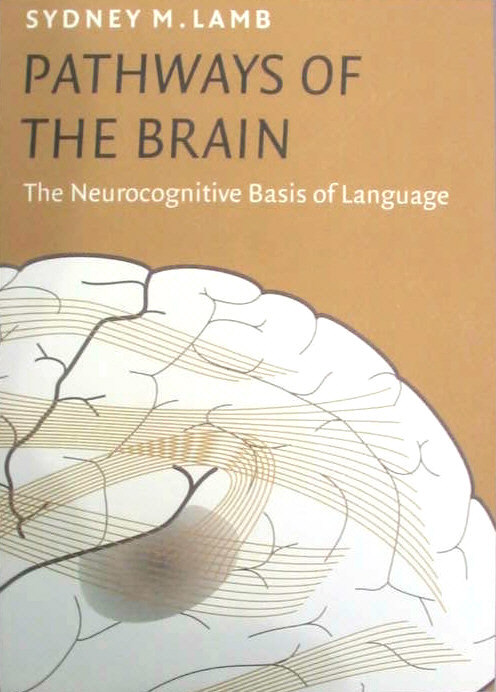Sydney M. Lamb
PATHWAYS OF THE BRAIN
of Language

|
Sydney M. Lamb PATHWAYS OF THE BRAIN of Language |

|
The brain, our organ of knowledge and abilities, enables us to instantly recognize a face in a crowd, to converse about anything we experience or imagine, to form thoughts and develop new ideas, to understand words coming rapidly in conversation. How does it manage all this? How does it acquire and represent such abundant information while also enabling such rapid access to individual words and their meanings?
PATHWAYS OF THE BRAIN builds a theory to answer such questions. From findings of linguistics plus evidence overlooked in earlier investigations, it develops a series of hypotheses about the structure and operation of the mind's linguistic system, demonstrating how knowledge can be represented in the connectivity of a vast network in which thousands of locations can be active in parallel. But such a theory raises further questions: How can such widely distributed information be coordinated? How is it learned? How much of the structure is innate?
PATHWAYS OF THE BRAIN proposes answers and then tests them against what is known about the brain. This stage of the exploration finds that virtually all of the hypotheses are confirmed or are consistent with the findings of neuroscience.
|
Click for fuller quotes |
"...the hottest thing in our field today. ..."
--Charles F. Hockett (linguist)
"...a major work of linguistic scholarship that is fully compatible with the new thinking in neuroscience...." --M. A. K. Halliday (linguist) "...a modern classic. ... a masterful correlation and application of linguistics to neuroanatomical interpretation." --Richard M. Hirshberg (neurosurgeon) "Refreshing interlinkages galore! Clear thinking, vivid and aposite graphics, and wonderful quotes." --Harold C. Conklin (anthropologist) "...fascinating and beautifully written book. ... If you have ever wondered what there is in the brain which makes us able to learn to understand and produce spoken and written language, this book is a must read." --David Hitchcock (philosopher) "...[has] succeeded in capturing the biological reality... to a very considerable extent... ...a fascinating neurocognitive account of the workings of language (and other cognitive abilities)." --Bert Peeters (linguist) "What a great book! ...an intellectual adventure, a tour de force of seminal ideas and expository writing." --Andrew Yiannias (businessman) "...convincing and...inspiring. ...new insights into the connection of language and the brain..." --Zoltan Dornyei (linguist) |
|
A New Kind of Linguistics
PATHWAYS OF THE BRAIN broadens the scope of linguistic inquiry by setting three plausibility requirements, 'operational', 'developmental', and 'neurological': A theory must provide a plausible account of how the mind's linguistic system can operate for speaking and understanding, how it can be learned by children, and how it is implemented in neural structures. |
The Intended Audience
As the book treats information from a variety of disciplines, it has been written for people who are not specialists in any of them. It speaks to anthropologists, linguists, neurologists, neuroscientists, philosophers, psychologists, and any thoughtful person interested in language or the brain. |
Amsterdam & Philadelphia: John Benjamins Publishing Co., 1999
(Current Issues in Linguistic Theory, Number 170)
xii + 416 pp.
Hardcover - 90 272 3675 5
Paperback - 90 272 3677 1